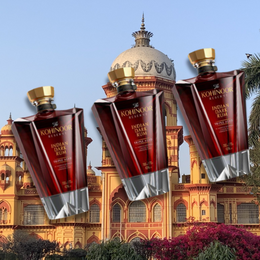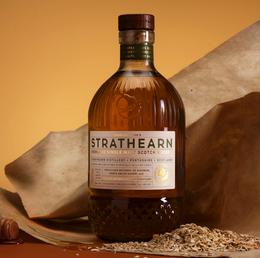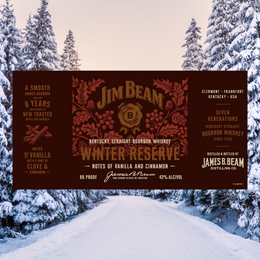Springbank Distillery releases Sixth Local Barley (Kampung Spirit) expression – with 100% Sherry Maturation for the First Time

(Image Source: Springbank Distillery)
What you should know:
- Most distilleries today ship cheaper barley from other parts of the UK import the barley.
- Springbank, as a craft distillery, has remained committed to the tradition of sourcing barley from nearby farms
- The Local Barley series (which has a cult following) exemplifies Springbank’s commitment to showcasing the terroir of Campbeltown, and its kampung spirit in ensuring money gets reinvested into farms in the surrounding locality.
- This new release is the first Local Barley expression with 100% Oloroso sherry maturation.
-
Bottle stats:
- bottled at near cask strength of 6% ABV
- matured in 100% Oloroso and ex-sherry casks
- Nose: Rich, fruity and nutty with raisins, chocolates and walnuts
- Palate: Rich and creamy with sweet creme brulee and nutmeg
- Our Quick Take: This is the first of its kind in a highly coveted series. We will fight to get our hands on it.
Sourcing barley
The quality of a malt whisky begins with the quality of the raw elements used to create the whisky – the water source, the peat and not least the barley.
Long before a globalised transport system enabled the purchase of ingredients from abroad, spirit distillers could only use raw ingredients that grew close to their distilleries. Grapes were amenable to the French climate, and so the French made brandy. Sugar cane grew in the tropical climates of the Caribbean and South America, and so the Caribbeans and South Americans made rum. Agave plants are native to Mexico where tequila and mezcal were first distilled. Grapes or cane could not survive in Scotland’s cold and dry climate, but the Scots had natural grown barley.
Traditionally- and I’m saying as far back as the 1500s- Scotch distilleries would harvest barley directly from the barley field in the vicinity. This has changed in modern times (since the 1900s). Due to lack of supply and high costs, most distilleries today ship cheaper barley from other parts of the UK, or routinely even from Europe or Canada.
The Local Barley series (or should I say the Springbank Kampung Spirit series)

The second iteration of the Local Barley series (first released 2016) (Image Source: Whisky Auctioneer)
Springbank Distillery bucks the trend and is a distillery that stays rooted in tradition. The distillery’s extremely coveted Local Barley series is more than just a limited edition series to collect and flip at auctions. These are bottles intended to represent the flavour of Campbeltown, the craft distillery ethic of Springbank Distillery, and most importantly, the sense of community and solidarity with the distillery’s local countryfolk.
Each batch of Local Barley bottles are distilled from individual barley crops grown at the nearby farm in the vicinity of the distillery. Each bottle’s label would state the name of the farm where the barley is sourced, whether it is “Machrimore Farm”, “West Backs Farm” or “Glencraigs Farm” amongst many.
We should bear in mind that it would have been cheaper and more convenient to source barley from elsewhere. However, as we’ve seen with Waterford distillery that there’s pride in using locally sourced barley that are of high quality. Rather than turning all these high quality barley into cattle feed, some batches ought to be set aside for a higher purpose (of making Scottish angels’ nectar). Buying from the local farms also ensures money gets reinvested into the local economy, bringing benefits to the population in Springbank Distillery’s area. It’s a win-win all round. Think of the series as essentially what kampung spirit would look like in the context of the Scottish countryside.
The Local Barley series is also not a new line of products released simply for marketing purposes. The series has its origins back in the 1960s, when Springbank began procuring barley from specific farms in the locality. Spirit was distilled and barrelled-up, only to be bottled between 1990 to 2001- as the first edition of the Local Barley. This series became a huge hit amongst whisky enthusiasts, with the original Local Barley bottles highly sought after by collectors with cash in hand.

The 36 Year Old Springbank Local Barley of 1965 vintage, bottled in 2001. This bottle now goes for at least S$5,000. (Image Source: Whiskybase)
The Local Barley series then disappeared for 15 years, and returned in 2016 with a range of 5 bottles:
- 2016 | 54.3% | 16 YO | 80% Bourbon/20% Sherry | Prisma Barley | Machrimore Farm.
- 2017 | 53.1% | 11 YO | 100% Bourbon | Bere Barley | Aros Farm
- 2017 | 57.3% | 10 YO | 70% Bourbon/30% Sherry | Belgravia Barley | West Backs Farm
- 2018 | 57.7% | 9 YO | 80% Bourbon/20% Sherry | Optic Barley | High Cattadale Farm
- 2019 | 56.2% | 10 YO | 77% Bourbon/20% sherry/3% Port | Optic Barley | High Cattadale Farm
The power and validity of keeping things local. Going beyond the mere terroir that some proclaim, by taking that extra step with floor malting and bottling on site.
Newly released Sixth bottle
We have received word that the 2020 edition of the Local Barley series will be soon released.

(Image Source: Springbank Distillery)
This edition is sixth in series. Distilled in 2010 and bottled in 2020, this one is a 10 Year Old. The barley is of the Belgravia strain and is sourced from the nearby Glencraigs Farm that is only a 40-minute hike (or a 20 minute donkey ride) from Springbank Distillery.

Most remarkably, this one is matured in 100% Oloroso sherry casks. This is very special considering that the first 5 bottles were either matured fully in bourbon or mainly bourbon with some sherry influence (only 20% to 30%). Just look at how red the 2020 edition is!

The 2020 Local Barley matured in 100% Oloroso. Please look at how red it is compared to the typical yellow-gold Local Barley bottles (Image Source: Whiskynotes)
As always, the bottling strength is a robust and satisfying 55.6% ABV.
We have received word that the flavour profile would be as such:
Nose:
- Rich, fruity and nutty
- Notes of raisins and prunes, a hint of bitter dark chocolate, espresso coffee beans and walnuts.
Palate:
- Elegantly rich and creamy.
- Sweet and spicy with a hint of nutmeg.
- Creme brulee and a touch of zesty orange peel.
Finish:
- The fnish opens to give flavours of juicy soaked Maraschino cocktail cherries, delicious caramel shortcake with a coastal briny influence towards the end.

Maraschino cocktail cherries that we typically see on cream cakes or cocktails. (Image Source: Pinterest)
This expression is already released in the UK around March 2021 with only 8500 bottles available worldwide. It would likely reach the hands of Singaporeans at around S$650.
Our Take
Compared to the earlier Local Barley expressions (which would be more malty and honeyed), the Oloroso maturation in this one probably adds a great deal of chocolate, nuttiness, and sweet dark fruits.
Who would have guessed?! Judging by its red colour, this one will be so highly sought after I can imagine feeling the bated breath of a mob of enthusiasts shuffling in front of an Apple store. It is needless to say that once released, it will sell out very quickly amidst the usual madness surrounding Local Barley releases.
We are ready for the scuffle outside the whisky shop and we can’t wait to get our hands on this.

@charsiucharlie





